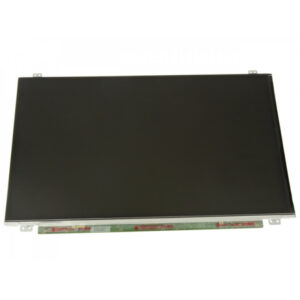Product details
Review Lenovo IdeaPad U330p Notebook Andreas Reid, ✓ Stefanie Voigt (translated by Andreas Osthoff), 08/28/2013 Is good necessarily expensive? Our editorial office got the IdeaPad U330p for an in-depth review. We want to determine what the almost-ultrabook is capable of in terms of mobility, performance, build and display quality. For the original German review, see here. We already thoroughly reviewed the predecessor of the U330p, the IdeaPad U310. Now we want to see if Lenovo improved its inexpensive line of mobile devices. The dimensions were only slightly changed; the width was reduced by 11 mm and the depth by 1 mm. We are eager to see whether the new processor is able to maintain its Turbo clock under load or if it is just running with its nominal clock. Another important aspect is the battery runtime, especially with a mobile subnotebook. Customers are usually using them on the go, so the weightshould not be too high either. We consider the following devices as the main competitors:- S30-i3U465 by MSI (i3-3217U, Intel HD Graphics 4000, 500-700 Euros, ~$661-$925)- Toshiba Satellite L830-15L (i5-3337U, AMD Radeon HD 7550M, 550-800 Euros, ~$727-$1058)- Asus VivoBook S300CA (i3-3217U, Intel HD Graphics 4000, 540-580 Euros, ~$714-$767) All devices are more or less in the same price range, but the reviewed Lenovo U330p is already equipped with the latest processor architecture from Intel (Haswell). Case Similar to the predecessor, the case is made of matte aluminum that gives the U330p a noble and more expensive impression. Only the Asus VivoBook S300CA has a similarly high-quality case within the competition. Other similarities to the predecessor are the different designs and colors of the display cover, which are advertised on Lenovo’s website. The MSI S30-i3U465 is slightly lighter with 1.4 kg but has a plastic case; the other two competitors weigh 1.78 or 1.89 kg respectively. With its 1.53 kg, the U330p takes a top spot within this price range. Nevertheless, you can comfortably open the display with just one hand, the base unit is only lifted by a few millimeters. Even the visible bouncing is very limited when you open the display with one hand and is mainly caused by the user. One advantage of the aluminum case is certainly the stability, at least on the bottom of the base unit. We can barely twist it even under high pressure. Unfortunately that cannot be said of the display: It is very easy to twist and there are even loud noises if the force gets bigger. The bottom is also very resistant against concentrated pressure but, once again, the keyboard area cannot continue this impression. Too much pressure, especially in the lower part of the keyboard, and the whole keyboard is pushed down. The stability of the case could be better, which is also shown by the (usually more expensive) competition. Considering the low price however, the overall quality of the case is good. Connectivity Instead of the two USB 3.0 ports the predecessor had you only get 1x USB 3.0, but two additional USB 2.0 ports this time. This is a strange decision, the trend is usually to increase the number of USB 3.0 ports since they are downward compatible to the older standards. This is an area where the Toshiba Satellite L830-15L can surpass the competition with 2x USB 3.0 and 1x USB 2.0, which is exactly the equipment of the old Lenovo U310. Asus also integrates 1x USB 3.0 and 2x USB 2.0 into the VivoBook S300CA, while the user of the MSI S30-i3U46 has to live with 1x USB 2.0 and 1x USB 3.0 but gets a VGA port in return. Besides the mentioned ports, the U330p also has a 3.5 mm stereo jack and an HDMI port; the other two USB ports and the card reader are on the other side of the case. We really like the port layout, the position of the ports is not too close to the front of the notebook. You can easily manage the cables at the back without affecting the usability of the notebook. 2x USB 2.0, power, 2-in-1 card reader 1x HDMI, 1x USB 3.0, 3.5 mm stereo jack Poor picture quality of the webcam Communication You can use the integrated WLAN adaptor for home or office networks, an Ethernet port is not available. The distance to the WLAN router should also not be too large. The connection was somewhat unstable in our tests with a distance of around 12 meters and two walls between the subnotebook and the router. Maintenance There is no separate maintenance cover, you have to remove the whole bottom cover to clean or access the components. It is fixed with Philips screws. Warranty Lenovo grants the standard 24-month manufacturer warranty for the notebook and 12 months for the battery. A warranty extension should be available, however, there were no details in regard to the prices and services on Lenovo’s homepage at the time of writing. Input Devices Keyboard Lenovo decided to integrate a chiclet keyboard. Contrary to the predecessor it is now support











There are no reviews yet.